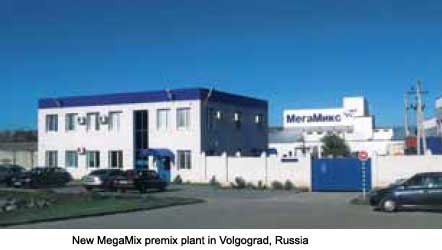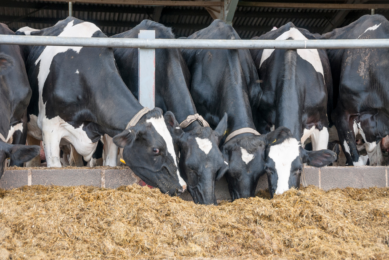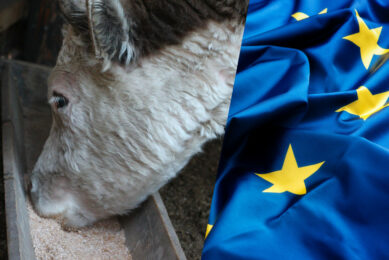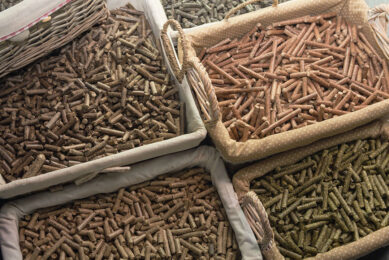MegaMix at the forefront of Russian premix market

With a fifty percent increase in annual production to 30,000 tonnes, premix manufacturer MegaMix will be able to supply 10% of the Russian feed market, which is estimated at 30 million tonnes of compound feed. Based in Volgograd in the south of the European part of Russia, General Director Vasily Friezen believes that his technical approach will make this possible.
The starting point of the group of companies including MegaMix was in 1999, when the enterprise “Vetfarm Ltd.” was founded, which is the (trade) flagship of the company. Rapid progress was achieved when in 2005 a piece of land was purchased for constructing a production site. In 2006 a customer-size packaging line was launched, introducing a new trademark of premixes “Selskiy Dvorik”, selling premixes in packages of 300g up to 2kg and enabling the company to meet the needs of private farming households.
In 2007 MegaMix signed a turnkey premix-plant contract with Dutch equipment manufacturer Ottovanger Milling Engineers. The plant was designed in close collaboration with BASF, Germany, one of the main suppliers of premix ingredients. In 2009 came the start-up of the new technically unique production line, by which production volume could be increased by more than five times. According to market experts such high-level production facilities are available nowhere else in Russia.
Quality as a basis
MegaMix obviously meets the strictest quality requirements for the products produced. It is also constantly expanding its sphere of cooperation and establishes stable and enduring partnerships with the world’s leading feed additives producers, such as BASF, Ajinomoto, Adisseo, Lohman Animal Health, Evonik and Vitafor to name a few.
Vasily Friezen is general director at MegaMix and also owns 50% of the company. He has a technical background and makes sure his employees are up-to-date with the latest developments. “We send our technical specialists to Germany for training to be at the forefront of technical developments,” Friezen says. “We are also in close contact with IFF in Braunschweig, who will proof our mixing accuracy.”
MegaMix has plenty of expansion opportunities. Based in Volgograd in southern Russia it is close to Ukraine and Kazakhstan, which are important export markets for the company. “Russia is still importing 50% of its premixes. Right now we are producing 20,000 tonnes per year, but this year we will change to three shifts and then can produce 30,000 tonnes. That is sufficient for 300,000 tonnes of compound feed,” Friezen explains. With Russia alone producing about 30 million tonnes of compound feed, MegaMix would have a 10% share of the Russian market if every tonne would be sold domestically. Compound feed production in Russia is growing at an estimated rate of 18% per year, so there is plenty of room for further expansion. Is the MegaMix owner afraid of further world liberalisation of trade under WTO? Not really, he says. “Companies with old equipment are and will disappear from the market, which in turn offers chances to modern and innovative enterprises.”
Production process
MegaMix produces premixes for all animal species, but poultry is by far the largest client. The company uses 42 silos for raw material and finished product storage. It also has a 25,000 m2 area for storage of bagged products.Mineral fillers, such as zeolites, chicken grit and calcium carbonate, are often used for the premixes, both separate and in combination, in optimal scientifically based proportions. According to Friezen these fillers have significant advantages over the bran that other companies often make use of. He explains that in the mineral filler the humidity amounts to only 1% (while the humidity of bran is 8-13%) which supports the stabilisation of some vitamins and minerals. High humidity can have an adverse effect on the premix. Also the mineral fillers don’t contain mouldy fungi and mycotoxins. Zeolites are also known for absorbing several mycotoxins. “But if a company requires a bran-based premix, we can also make that,” Friezen says.
Separate production lines
There are two production lines at the plant. One for mixes containing coccidiostatics and/or pharmaceuticals, the other solely for vitamin-mineral mixtures, vitamin blends and premixes. After dosing of all required components the process of mixing begins. From the weighing units, premix or mineral feed is brought into the intake unit for liquid components. In case the program doesn’t require the liquid intake, the product is brought into the packaging section where bags are filled from 300g up to 1,000kg big bags.











